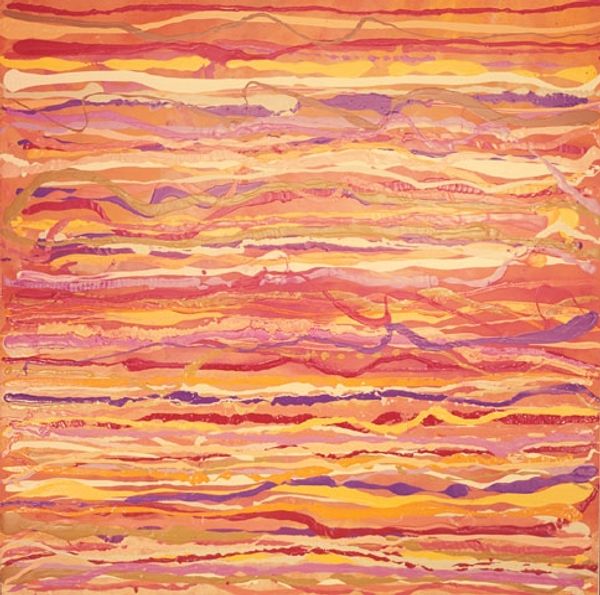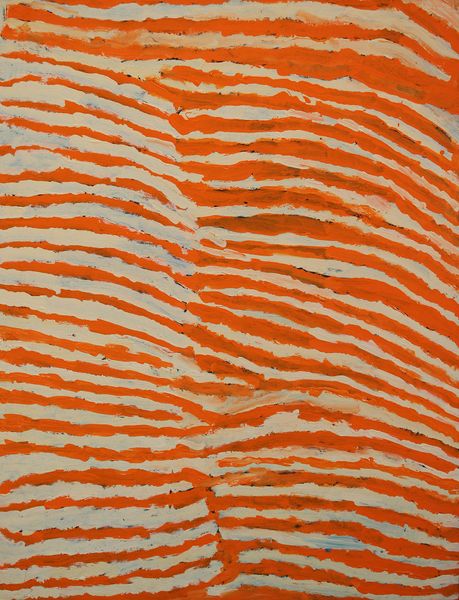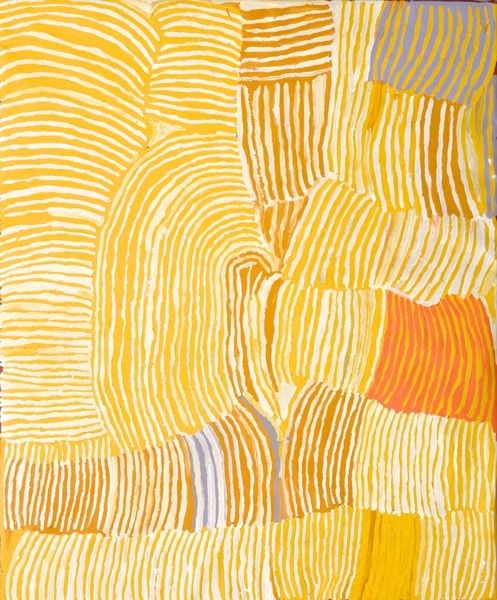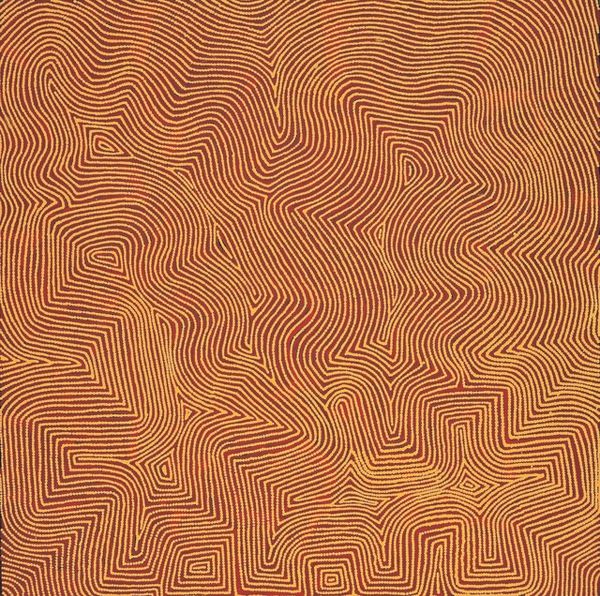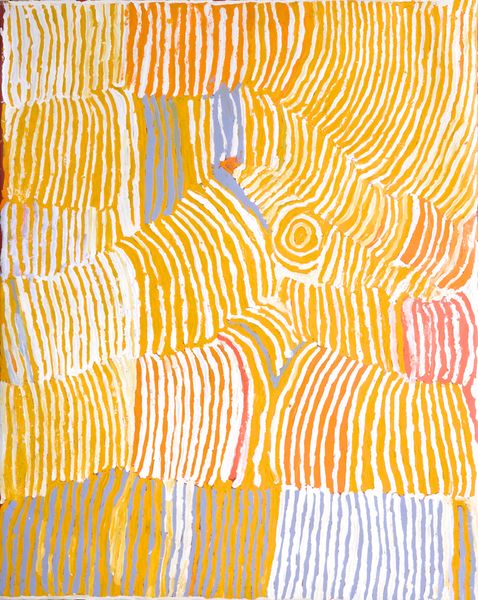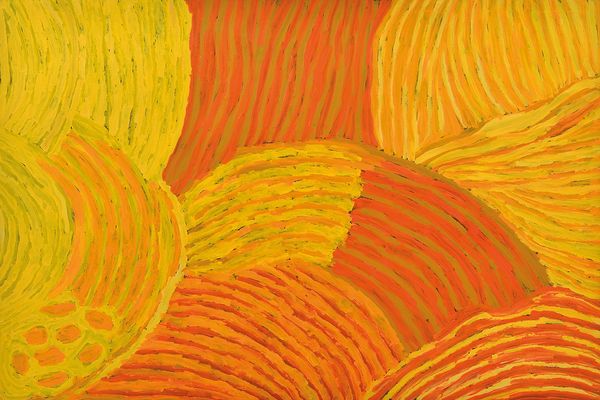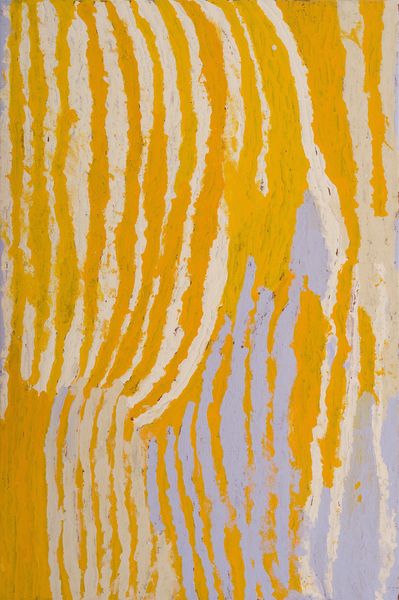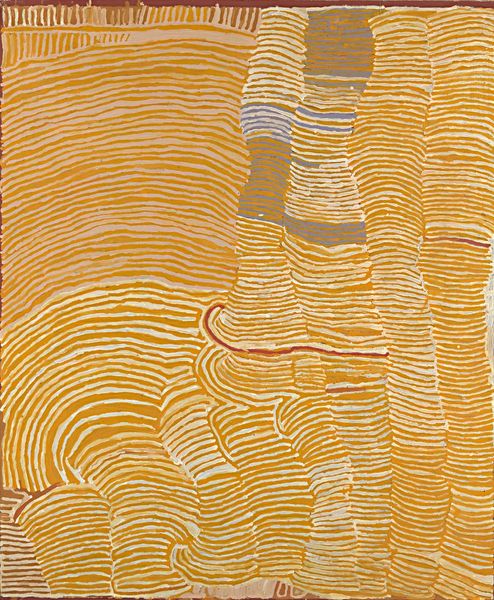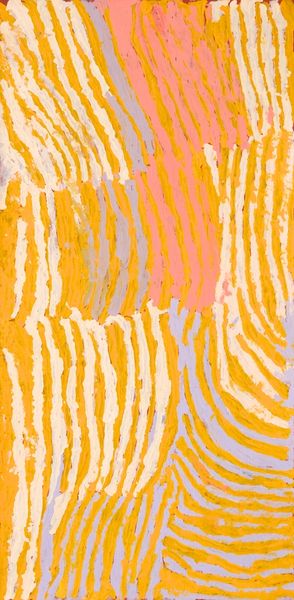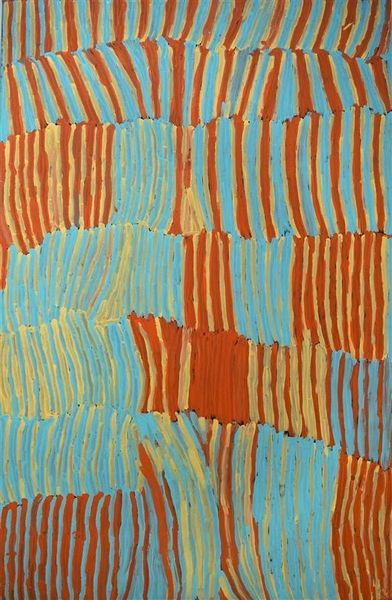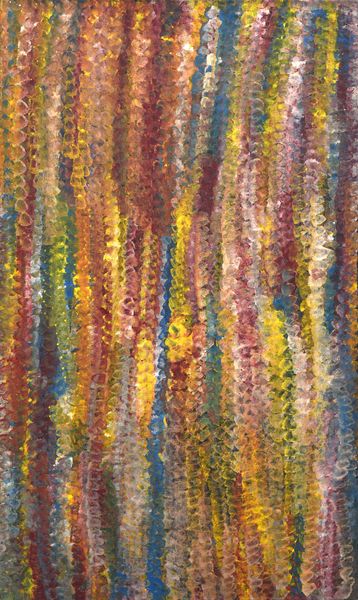
painting
#
natural stone pattern
#
naturalistic pattern
#
painting
#
geometric pattern
#
abstract pattern
#
organic pattern
#
flower pattern
#
abstraction
#
line
#
pattern repetition
#
layered pattern
#
pattern in nature
#
organic texture
Copyright: Makinti Napanangka,Fair Use
Curator: This is "Kungka Kutjarra (Two Women Dreaming)," an acrylic on canvas piece painted in 2008 by Makinti Napanangka, an important figure in the Australian Indigenous art movement. What's your initial take? Editor: It feels very visceral. Like looking at raw earth, striated and exposed, baked under a relentless sun. There's something deeply unsettling yet compelling about the relentless repetition of lines. Curator: The patterns you describe aren’t just surface decoration; they are visual language deeply embedded in the cultural narratives of the artist’s community. These specific ochres, this rhythm of line, speaks to ancestral stories and the intimate knowledge of the land. Editor: Do we know precisely which stories or Dreamings these colours and patterns allude to? The use of public and private imagery has always fascinated me. Is the intent purely devotional, or is there a wider didactic impulse, conveying stories to those outside of the immediate cultural group? Curator: Precisely deciphering specific narratives can be complex, as some knowledge is restricted and only shared within certain initiated groups. However, the "Kungka Kutjarra," which translates to "Two Women," points toward female ancestral beings and their travels, their impact on the landscape. In Aboriginal art, landscape *is* narrative. It’s a map of creation, law, and connection. Editor: And by bringing these ancient narratives into the public gallery, what’s being communicated about Indigenous identity? The politics inherent in displaying works of this kind are quite intense. There’s a dialogue that’s opened up – sometimes a painful dialogue – about sovereignty and custodianship. Curator: Absolutely. Putting works such as Napanangka's into public spaces promotes visibility and affirms cultural continuity. It combats erasures, asserting the presence and resilience of Indigenous knowledge systems. It is never just pretty. Editor: It also provides a powerful platform. A conversation on decolonization should center art's ability to reframe historical dialogues and champion diverse voices. "Kungka Kutjarra" serves as a vital, vibrant assertion of cultural identity within an institutional framework often criticized for its historical exclusions. It certainly inspires deeper introspection for me. Curator: For me, too. I come away feeling reminded about the deep connections between land, memory, and cultural resilience that persist within the patterns of this extraordinary piece.
Comments
No comments
Be the first to comment and join the conversation on the ultimate creative platform.
